Excitement mounting. Our shakedown is today. A shakedown is a trial run with all gear. We will depart around 11:00am from the lab, head to our snowmobiles which have been prepped with all of our gear for the field. The New Zealand team will arrive around 11:15 and we will have a quick "tool box" meeting to make sure everyone is aware of the day's details and we will head out to a first test site.
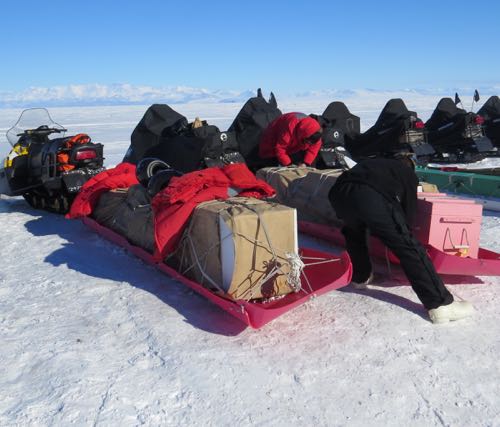 Preparing the sleds for our shakedown. My snowmobile does not have a sled. I am not sure they trusted me with the equipment!
Preparing the sleds for our shakedown. My snowmobile does not have a sled. I am not sure they trusted me with the equipment!
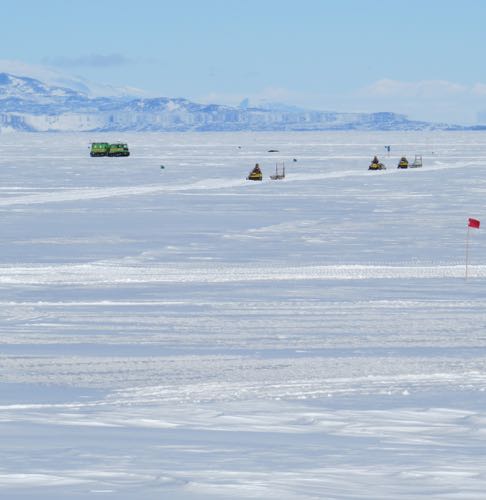 New Zealand team approaching the transition to pick us up. They brought three snowmachines and their all terrain snow vehicle, the Hägglunds.
New Zealand team approaching the transition to pick us up. They brought three snowmachines and their all terrain snow vehicle, the Hägglunds.
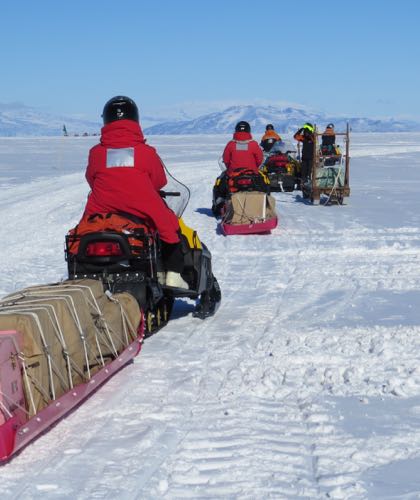 Our caravan is heading out. Jemma will lead and Pat will bring up the rear. I am fifth in line!
Our caravan is heading out. Jemma will lead and Pat will bring up the rear. I am fifth in line!
I am hoping to catch some penguins in action today and also get a real look at the procedures in the field. The New Zealand team has been outstanding thus far and I am looking forward to getting to know them better. The PI for their group, Dr. Pat Langhorne, a physicist, is originally from Scotland but has been in NZ for many years at the University of Otago, the southernmost University. Four other members of their team, Dr. Greg Leonard (University of Otago), his grad student Eamon Frazer, Dr. Wolfgang Rack, and PhD candidate, Gemma Brett, both from the University of Canterbury in NZ will also be with us today for our shakedown. Wolfgang is a climatologist/glaciologist. I am excited to get to know him, as his work is of great interest to me as an APES teacher. He is also very friendly and has gone out of his way to make me feel part of the team! He tells me to take lots of pics and not to worry about slowing anybody up! He is originally from Austria and his PhD student is from Ireland. We have quite the international team... China, US, Ireland, Scotland, Austria and NZ represented. Pretty amazing!
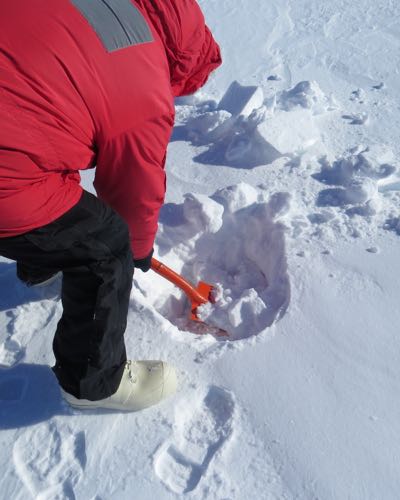 Dr. Xie is shoveling the snow down to the ice so our ice core will not be compromised with snow.
Dr. Xie is shoveling the snow down to the ice so our ice core will not be compromised with snow.
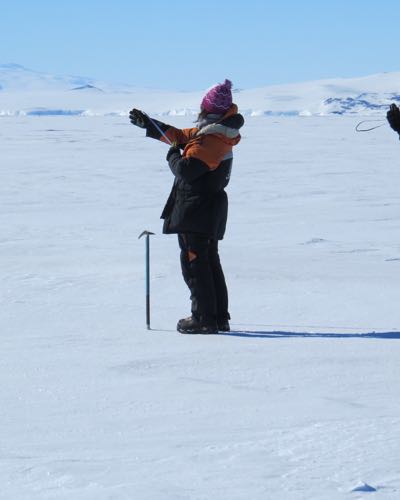 Jemma is laying out a grid for her measurements.
Jemma is laying out a grid for her measurements.
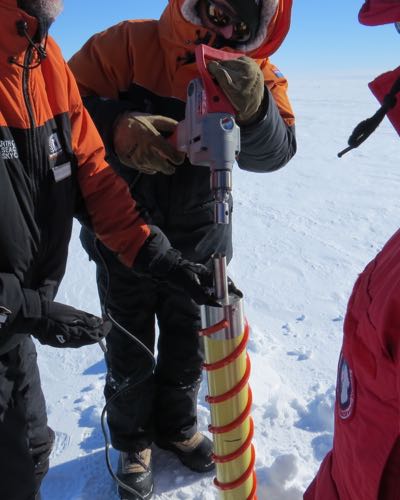 Wolfgang and Greg are showing us how to put the drill on the corer and how to work the entire apparatus.
Wolfgang and Greg are showing us how to put the drill on the corer and how to work the entire apparatus.
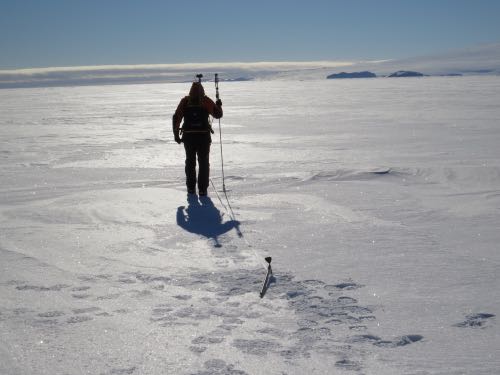 Pat is taking snow depth and freeboard measurements with a sensor.
Pat is taking snow depth and freeboard measurements with a sensor.
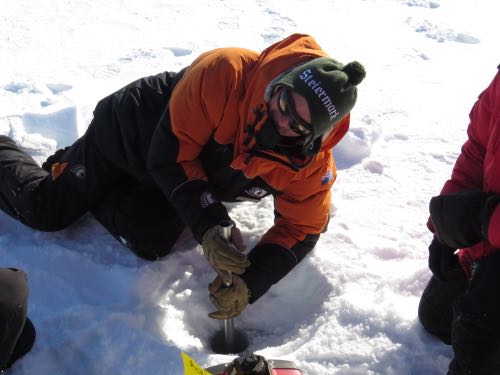 Wolfgang is showing us how easy it is to lose our corer. Someone must always keep a hand on it or it will go through the ice into the sea water. In trying to pull this core up however, he hurts his back.
Wolfgang is showing us how easy it is to lose our corer. Someone must always keep a hand on it or it will go through the ice into the sea water. In trying to pull this core up however, he hurts his back.
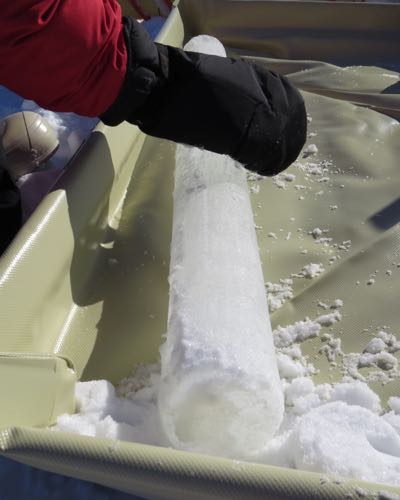 Our first ice core! We did it and all in one piece… okay, maybe Wolfgang and Greg did it, but it counts!
Our first ice core! We did it and all in one piece… okay, maybe Wolfgang and Greg did it, but it counts!
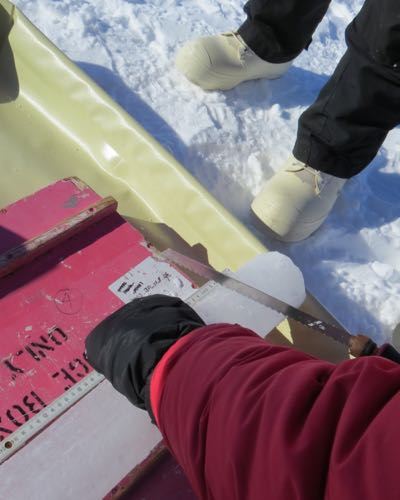 This ice core is cut at 10cm increments to maintain the integrity of the salinity and isotopes at each section in the ice.
This ice core is cut at 10cm increments to maintain the integrity of the salinity and isotopes at each section in the ice.
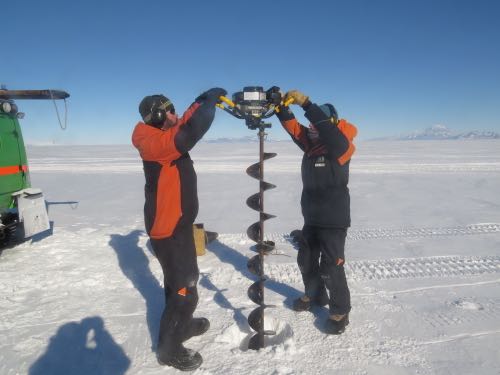 Greg and Eamon using the large drill for sea water measurements.
Greg and Eamon using the large drill for sea water measurements.
It is a beautiful day in McMurdo, sun is shining and the wind is minimal. I am nervous about my toes getting cold on the ice. I have my bunny boots on today along with wool socks and boot liners. I am bringing extra socks and toe warmers just in case. It is good to have a trial run to figure out how to dress for our actual field days. Those will be longer and generally involve more than one test site. Our plan today is simply to test equipment and procedures in the field. We should return back to base around 5:30pm. We will take bag lunches and a thermos of hot water to make hot cocoa! Our trip today will allow us to get a great view of Mt. Erebus. Hope it's venting a bit!
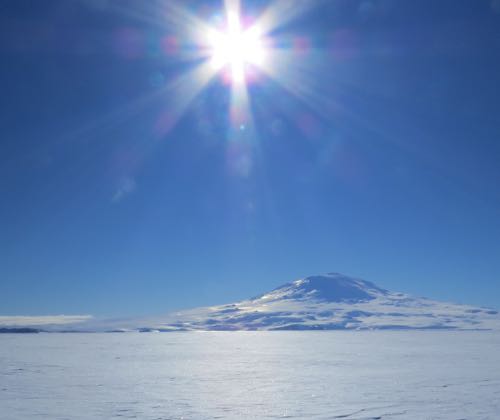 Mt. Erebus is perfectly in view.
Mt. Erebus is perfectly in view.
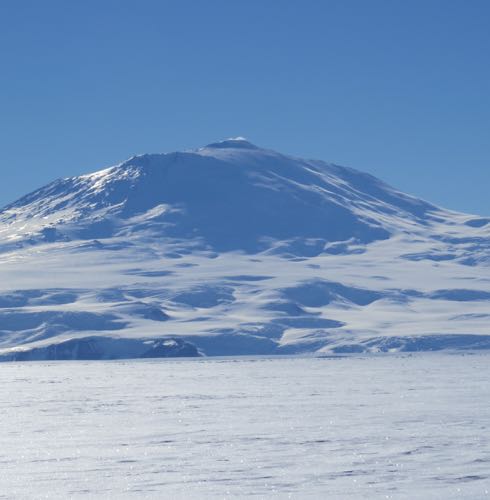 Mt. Erebus with some steam!
Mt. Erebus with some steam!
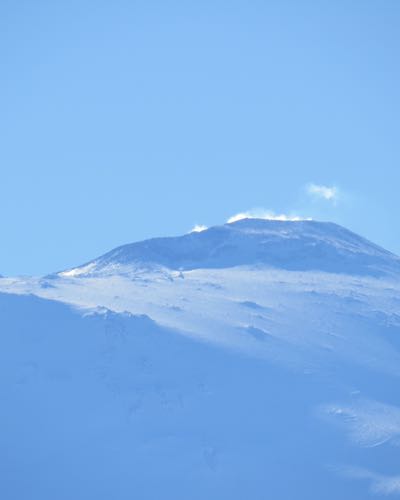 She's ready to blow… well no actually. Perfectly normal steam venting from this active volcano!
She's ready to blow… well no actually. Perfectly normal steam venting from this active volcano!
Flat Loraxes from Hailey in 1st grade and a mystery student at Nicolet. Perhaps the mystery student will send me a message through the journal claiming their card!
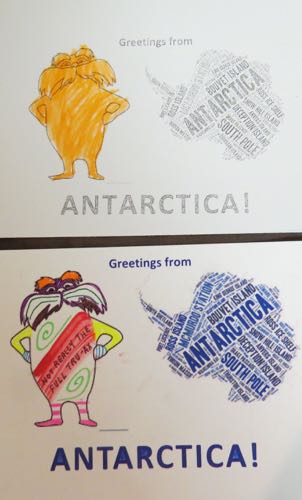 Flat Lorax postcards for Hailey in 1st grade and an unknown Nicolet student – likely in APES!
Flat Lorax postcards for Hailey in 1st grade and an unknown Nicolet student – likely in APES!

Comments
Add new comment